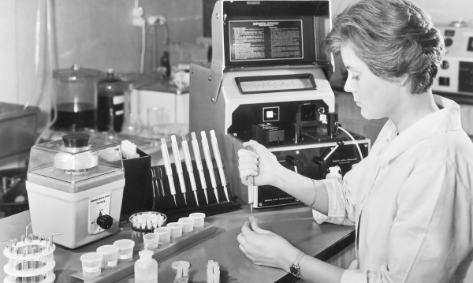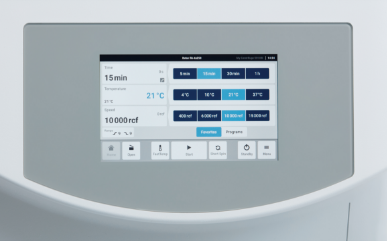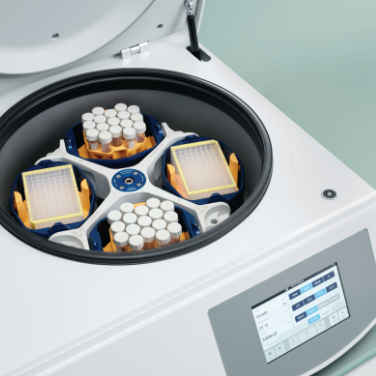Modernizing Benchtop Centrifugation
Centrifugation has come a long way since the 19th century, when the first centrifuge-type machine was invented to separate cream from milk in dairies. Scientists quickly found other uses for centrifuges in the laboratory and innovations occurred rapidly. In 1964, Eppendorf launched the first microcentrifuge — the Centrifuge 3200 — as part of the Eppendorf Microliter System, which revolutionized global life sciences research.
Modern Centrifuge Operation
In modern labs, large benchtop centrifuges are often shared among users with different applications and requirements. They can also require multiple rotors, buckets, and adapters to handle various vessels. Valuable time may be spent changing rotors and other accessories, and these extra components also consume valuable storage space.

Shared centrifuges means that parameters must be reset or checked before every run. User inexperience and fast-paced environments can lead to mistakes, like incorrect speed settings or braking ramps. Such errors can result in sample loss or the need to repeat the run.
Labs are also becoming increasingly digital — paper lab notebooks and other forms of manual documentation are being replaced with software systems that track data electronically.
Users can now filter information and export only the data that’s relevant to them. Data can often be downloaded via USB (in PDF or CSV format) or run through a software like eLabJournal, an integrated solution for data, sample, and protocol management.
The Eppendorf 5910 Ri Centrifuge Option
The unique universal rotor concept of the Centrifuge 5910 Ri greatly reduces the need for extra buckets and adapters. The swinging-bucket rotor accommodates conical tubes, microplates, and 250 mL bottles without the need to change rotors, buckets, or adapters. Choose optional fixed angle rotors for applications that require speeds up to 22,132 x g.

When developing the 5910 Ri model, Eppendorf focused on operation practicalities and incorporated customer feedback, including a System Usability Scale (SUS) to assess overall ease of use. The SUS (https://measuringu.com/sus) questionnaire rates usability on a scale of zero to 100. The average SUS score for centrifuges is around 68, but the 5910 Ri had a final score of 93, which is well above average.
The four most frequently used values for time, speed, and temperature are saved in a single screen, which lets you program your run with just three clicks. Save protocols using specific names, like “Pelleting E. coli” to help avoid errors and save time.

Eppendorf’s universal rotor concept enables users to spin a variety of tubes and plates without changing buckets or adapters.
The 5910 Ri offers three-level user management and documentation options for GxP/GLP compliance. It automatically captures run details: time, temperature, speed, whether the run was stopped manually, program used, user ID, and much more for up to 1,000 protocols. Data can be exported via USB in PDF or CSV format.

